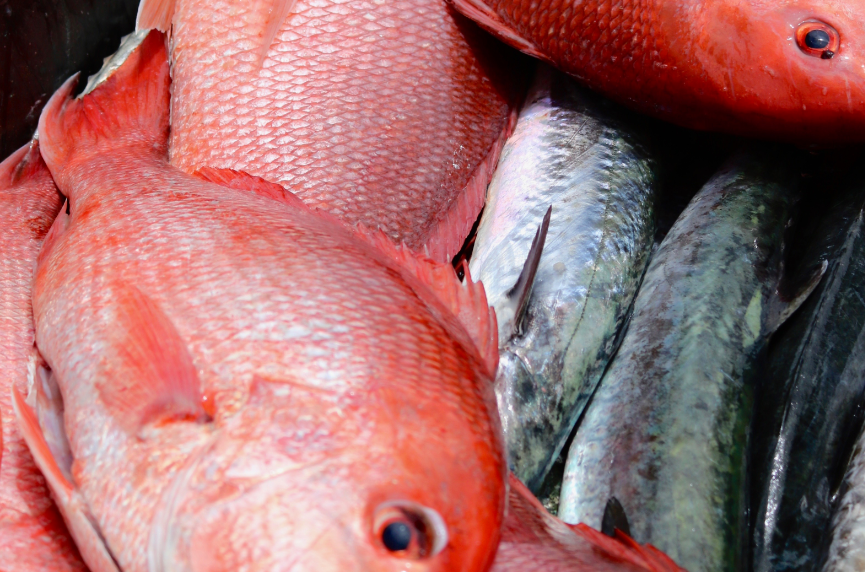
When it comes to effectively managing Florida’s saltwater fisheries, good data can be hard to obtain, but it’s necessary in order to effectively estimate the fish in the water and the fishing effort going into that area.
One of those efforts in this state is the State Reef Fish Survey (SRFS), which began as a Gulf Coast project and expanded to the Atlantic Coast in 2020. The survey, a project of the Florida Fish and Wildlife Conservation Commission (FWC), runs concurrent with the Marine Recreational Information Program (MRIP) from the National Oceanic and Atmospheric Administration (NOAA).
“Our intention has not been to replace that survey, but to supplement it to get better information that can be helpful to informing assessment management, particularly for reef fish,” said Beverly Sauls, an FWC research scientist, during a presentation this week to the South Atlantic Fishery Management Council (SAFMC).
The state reef fish designation on Florida fishing licenses gives researchers an idea of the universe of people with which to start, and have a directory of participants for the survey. The survey has response-by-mail and dockside interview methods. Before the designation, it was hard to tell who intended to use their license for offshore fishing.
There are a number of species for which private anglers need the license designation, including amberjack, black grouper, gag grouper, red snapper, almaco jack, gray triggerfish, and other snappers and groupers.
The MRIP catch estimates are consistently 2-3.5 times the SRFS estimates in the Gulf, for reasons that aren’t fully known but are under investigation. In the meantime, scientists developed a ratio to be able to work with both sets of numbers since the difference is consistent across time and species.
“That’s important because it facilitates the use of our more-recent SRFS estimate into the regional stock assessment process, which has to have a complete time series of landings that are collected in a consistent manner,” Sauls said.
“It also allows us to track landings against management targets that are in the MRIP (numbers) and convert it to (SRFS numbers).”
Estimates between the two surveys in the Atlantic are relatively similar. One notable difference is the SRFS estimates a higher proportion of reef fish angler trips in state waters, which are from the shore to three miles out. The reasons for that difference aren’t immediately known, either.
Regarding the ongoing red snapper management controversy in federal Atlantic waters, there is some difference between MRIP and SRFS on red snapper discard estimates.
“This Magnuson-Stevens Act, I understand it’s been in play for quite a long time,” Darrin Willingham, Vice President of the Jacksonville Offshore Sport Fishing Club, said in January at a NOAA Fisheries scoping.
“However, I think we need to go back and look for the original garbage-in, garbage-out data that has sent this terrible snowball rolling. If you look at it, the whole reason everybody is considering this to be overfished is because of data that has been shown to be skewed data, inappropriate data, false data,” he said.
MRIP catch estimates tend to peak with the two- and three-day recreational red snapper seasons in previous years, along with an unusual peak in February 2022 with an estimate of more than 1.2 million discards.
Because of a flood of young red snapper into the fishery, discards are the reason federal fishery managers consider the fishery overfished and undergoing overfishing, despite the abundance of the species.
“Their (February) estimate is higher than the whole rest of the year combined,” Sauls said. “So, some of these peaks do raise concern about how the volatility, sometimes, of the MRIP survey estimates can be affecting the annual totals.”
Chip Collier, the SAFMC Deputy Director for Science, asked Sauls whether the spike in effort for red snapper affects other species that swim in the same area.
“It didn’t impact it as much in the MRIP estimates, from what I’ve seen,” Sauls said. “I guess it’s because when that season opens, that’s what gets intercepted, is red snapper.”
The problem tends to be, according to anglers, that they’re pulling up red snapper at all times of the year when they’re out looking for other species because there are so many snapper in the water.
In order to better verify the accuracy of the fishing effort data, the survey is expanding to record recreational fishing in the Atlantic. FWC is partnering with CVision AI to video traffic in and out of inlets and filter that through artificial intelligence to automate boat counts. That effort starts in Cumberland Sound, Mayport and Ponce Inlet.



